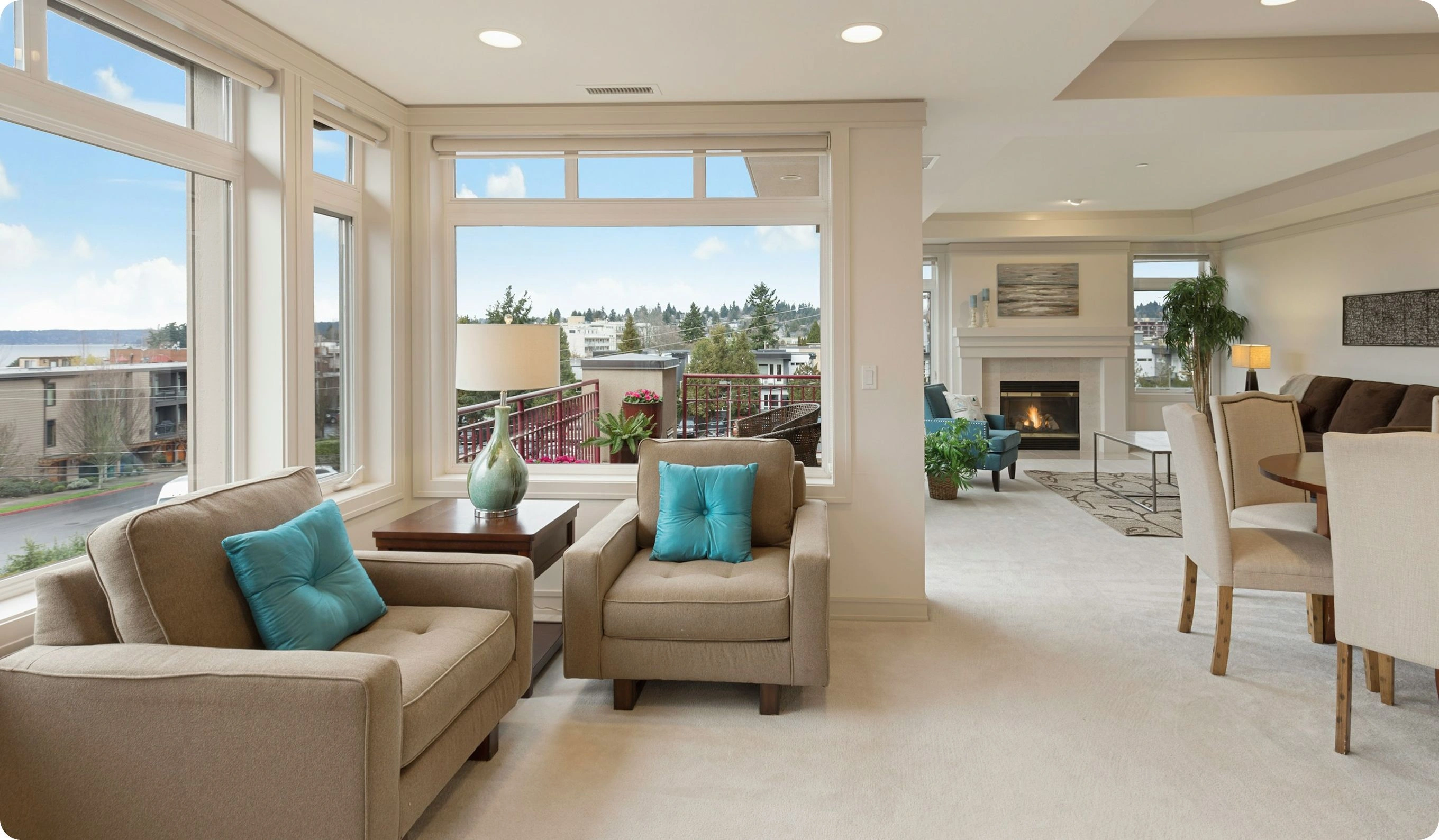Secondary real estate in Santa Cruz de la SierraCity of warmth, parksand expanding suburbs

Best offers
in Santa Cruz de la Sierra
Benefits of investment in
Bolivia real estate
Urban momentum in Santa Cruz and La Paz
These fast-growing cities combine rising local demand with some of the lowest entry prices in Latin America — ideal for residential buyers and small developers.
Open access and full ownership for foreigners
Bolivia offers one of the most accessible legal frameworks in the region: no restrictions, low bureaucracy, and clear property rights for international investors.
Nature-backed opportunities outside the spotlight
From the shores of Lake Titicaca to fertile valleys and scenic highlands, undeveloped lands offer space for eco-living, tourism, or long-view land banking.
Urban momentum in Santa Cruz and La Paz
These fast-growing cities combine rising local demand with some of the lowest entry prices in Latin America — ideal for residential buyers and small developers.
Open access and full ownership for foreigners
Bolivia offers one of the most accessible legal frameworks in the region: no restrictions, low bureaucracy, and clear property rights for international investors.
Nature-backed opportunities outside the spotlight
From the shores of Lake Titicaca to fertile valleys and scenic highlands, undeveloped lands offer space for eco-living, tourism, or long-view land banking.

Useful articles
and recommendations from experts
Main title about secondary real estate in Santa Cruz de la Sierra
Why secondary properties attract buyers
Secondary real estate in Santa Cruz de la Sierra gives buyers immediate access to fully commissioned urban housing in Bolivia’s most dynamic growth pole. Instead of waiting through multi-quarter construction cycles and quality variance typical of new deliveries, purchasers step into functioning apartments, townhouses and single-family homes already tied to dependable utilities, ring-road arterials and everyday amenities. That readiness compresses time-to-occupancy for owner-users and time-to-income for landlords while materially reducing execution risk. In the resale segment, pricing reflects tangible attributes—orientation, cross-ventilation, acoustic exposure, circulation logic, daylight quality, parking practicality and building-management standards—rather than brochure renderings, enabling underwriting grounded in observable facts and current comparables.
Many pre-owned homes around the second, third and fourth rings have been modernized: distribution boards and wiring brought to current safety standards, plumbing risers and fixtures replaced, energy-efficient glazing added on noise-exposed façades, inverter air-conditioning installed, and kitchens and bathrooms refitted for durability. Because upgrades precede purchase, buyers avoid the post-handover capex that often turns a “good price” on a new build into months of disruptive work. For investors, better envelopes and reliable plant translate into fewer service calls, improved tenant satisfaction and faster renewals. For households, the benefit is direct: moving in without dust, delays or guesswork and living minutes from supermarkets, schools, green pockets and healthcare.
Santa Cruz’s concentric “ring-road” (anillos) structure strengthens the secondary proposition. Daily needs cluster along the rings and radials, so commutes are quantifiable and short. Retail gravity—malls, supermarkets, specialty stores—sits near these corridors together with clinics, gyms and cafés. Telecoms coverage, ride-hailing density and delivery logistics follow the same pattern, which further supports car-light living. VelesClub Int. layers disciplined sourcing, building-fabric assessments and live lease comparables onto these fundamentals so each acquisition aligns with functional needs, yield targets and exit timing.
Established neighbourhoods
The market organizes around mature micro-areas with distinct profiles and shared fundamentals. The historic core around the central plaza concentrates restored townhouses and low-rise apartments prized for character, walkability and proximity to civic venues. Streets radiating from the centre blend housing with small commerce—grocers, pharmacies, cafés—creating everyday convenience that stabilizes tenancy. Equipetrol and adjacent business corridors combine modern mid-rises, serviced condos and boutique towers close to offices, dining and Ventura Mall, attracting professionals and medium-term corporate leases. Las Palmas and southern residential belts offer family-scaled apartments and townhouses with parks and schools, balancing lifestyle with access to the rings. Across the river, Urubó and nearby slopes provide larger footprints, terraces and calmer streets while remaining a short drive to the core.
Common to these settings are predictable municipal basics: paved access, drainage, lighting, routine waste collection and consistent public-realm upkeep. That reliability reduces unplanned disruption for residents and landlords. It also supports transparent operations for building managers—security staffing, lift servicing, façade maintenance—which, in turn, limits special assessments and protects net yield. VelesClub Int. screens blocks and buildings for these on-the-ground realities rather than relying on marketing claims, ensuring that a property which looks attractive in photos also lives well over the lease lifecycle.
Who buys secondary real estate
Demand is structurally diversified. Local families use the resale market to upsize into formal housing close to schools and healthcare while staying inside the anillos. First-time buyers prioritize efficient two-bedroom layouts with laundry niches and balconies; move-up households seek three-bedroom plans with terraces or modest gardens for cross-ventilation. Professionals in services, agribusiness, logistics and finance choose transit-accessible apartments that reduce door-to-work times and support hybrid schedules. Owners of small businesses acquire ground-floor or mezzanine units in mixed-use corridors to combine living and operating space.
On the investor side, two profiles dominate. Yield-focused buyers assemble clusters of one- and two-bedroom units within walking distance of business belts and retail nodes, targeting steady absorption and renewals over headline rents. Diaspora purchasers—families working abroad—buy with dual intent: a pied-à-terre for future return and a rental income stream in the interim. Both segments favour secondary assets for verifiable operating history, immediate habitability and transparent running costs. VelesClub Int. maps each use case to micro-locations, screening for sunlight, breezes, acoustic levels, storage logic, shaft placement and service-core quality—practical details that determine living comfort, leasing velocity and tenant retention.
Market types and price ranges
Santa Cruz de la Sierra’s resale landscape spans the full spectrum of urban typologies. Entry assets include studios and compact one-bedroom apartments in walk-ups or modest lift-served buildings near the centre or trunk corridors, with pricing reflecting fabric condition, access and HOA governance. Core family stock—two- and three-bedroom apartments in mid-rises and attached townhouses in residential grids—offers the most balanced combination of space, budget and adjacency to schools and parks. Premium secondary options such as restored colonial houses near the core, high-floor condos in business belts or hillside duplexes with terraces command higher prices based on plot size, outlook, envelope performance and bespoke interiors.
For portfolio builders, small multi-unit properties—four to eight doors—near commuter routes or cultural amenities provide scale efficiencies and diversified cash flows with lower vacancy risk. Across categories, units that meet a defensible price-to-utility ratio—sensible furniture placement, kitchens that function under real use, bathrooms that vent effectively and storage that clears circulation—consistently outperform on renewals and lifetime value. Stabilized net yields of mid-single digits are common for long-stay leases, with incremental uplift where medium-stay demand tied to business travel is serviced professionally. VelesClub Int. underwrites conservatively with expense reserves for HOA dues, insurance, routine AC service, paint cycles, minor appliance replacement and prudent allocations for common-area capex.
Legal process and protections
Conveyancing follows a formal civil-law sequence designed to protect both parties and secure clean title transfer. After commercial terms are agreed, a preliminary agreement records price, timelines, conditions precedent and deposit mechanics. A notary oversees due diligence and deed preparation. Legal checks confirm chain of title via the land registry, verify the absence of liens and encumbrances and ensure the cadastral description aligns with the physical property. Municipal certificates of good standing for property taxes and utilities are obtained to prevent legacy arrears from following the buyer.
Technical diligence proceeds in parallel. Inspectors assess structural integrity, roofs and façades; test electrical safety (grounding, breaker sizing, outlet load); review plumbing pressure and drainage; evaluate HVAC performance, window sealing and moisture management; and confirm elevator maintenance and fire-safety systems where applicable. In condominiums, homeowners’ association bylaws, financial statements and reserve levels are reviewed to understand governance quality and future contribution needs. When a unit is tenanted, existing lease terms, deposit records and payment histories are analyzed to map transition timing and obligations. At closing, funds are handled through controlled accounts, the deed is executed and the transfer is registered so title becomes opposable to third parties. VelesClub Int. coordinates the sequence—document collection, legal and technical opinions, insurance placement and post-closing utility transfers—so onboarding remains predictable even for non-resident clients.
Best areas for secondary market
Performance concentrates where mobility, services and lifestyle intersect. The historic nucleus delivers scarcity, footfall and cultural cachet, supporting resilient pricing and strong occupancy for well-specified units. Equipetrol and adjacent business corridors balance proximity to offices with hospitality and retail, making them ideal for medium-term professional leases. Residential grids around Las Palmas and the southern rings attract long-term households willing to sign multi-year agreements; lower turnover and refresh costs improve lifetime yield even without top-quartile rents. Hillside and river-adjacent pockets such as Urubó introduce outlook, airflow and quieter streets; with thoughtful acoustic treatment and shading, these homes command modest premiums while maintaining steady renewals.
Across archetypes, assets outperform when they combine measured acoustic isolation, efficient climate control, reliable water pressure, durable finishes and logical storage. VelesClub Int. applies a standardized scoring model—fabric condition, envelope, systems, daylight, noise exposure, circulation, micro-amenities and mobility—to rank streets and blocks and steer capital toward pockets with the most supportive fundamentals. The framework also flags streets where future construction or traffic projects could impair livability, allowing buyers to avoid negative externalities before they appear in rental feedback.
Why choose secondary over new + VelesClub Int. support
Choosing secondary real estate in Santa Cruz de la Sierra solves three core problems at once. First, it removes timeline risk: the asset is real, functioning and ready, so owners can occupy or lease within weeks of closing. Second, it reduces finish variability: what you buy is what has been inspected and proven in daily use; there is no guesswork about acoustics, ventilation or circulation. Third, it right-sizes capital allocation: instead of paying a developer premium for renderings or speculative amenity packages, buyers direct funds toward targeted improvements that elevate comfort and rentability—lighting layers, storage, AC efficiency, water-pressure stabilization and window sealing—at favorable cost-to-benefit.
VelesClub Int. amplifies these advantages with an end-to-end platform. We curate listings that match the brief, reject assets that underperform on lived-experience metrics, benchmark pricing to recent transfers and live lease comps and pressure-test cash flows with conservative expenses and realistic vacancy. Our legal and technical teams coordinate due diligence, notarial execution and registration; our operations desk manages tenant placement, preventive maintenance and reporting. Owners receive clear dashboards summarizing occupancy, arrears, work orders, capex and benchmarks, enabling timely, informed decisions without day-to-day oversight. The outcome is a quiet compounder: a secondary property in Santa Cruz de la Sierra that produces resilient cash flow, protects capital and remains liquid in a large, need-driven market.
